Göta Vapenhistoriska Sällskap
Göta Association for Weapon History
|
Göta Vapenhistoriska Sällskap
Göta Association for Weapon History
|
Here are some notes and pictures of
the Swedish Military pistols and revolvers
intended for cartridges.
Click on the pictures and you can see larger pictures.
Revised 2012-08-05
Written by O. Janson
Swedish Revolver m/1863
| Revolver m/63, Rev m/63 | |
|---|---|
| Calibre | 11 mm pin-fire (Lefaucheux) |
| Ammunition | 11 mm m/1863 |
| Feed | Six-shot drum |
| Design | Lefaucheux |
| Action | Single-action revolver |
| Manufacturer | Lefaucheux, Paris |
| Year of delivery | 1863 |
| Quantity | 1065 |
| Barrel | 158 mm, 4 grooves |
| Length | 305 mm |
| Weight | 1,05 kg |
| Sights | Fixed post, rear sight notch on top of hammer |
| Miscellaneous | Also used with 113 mm barrel and stronger frame. |
| Status | Later converted to Revolver m/63-79 |
|
1850 Bernimolin in Belgium constructed the first central-fire cartridge. Around 1865 different countries in Europe started to use revolvers with central-fire cartridges.
The Cavalry in Sweden was still equipped with single barrelled pistols. 24th of April 1866 there came a decree from the King for a test at all Cavalry Regiments of together 100 Pin-fire revolvers of Lefaucheaux model and 100 cartridges for each revolver. 1867 a new order was given to test another revolver made by Auguste Francotte in Liège. |
Swedish Revolver m/1871
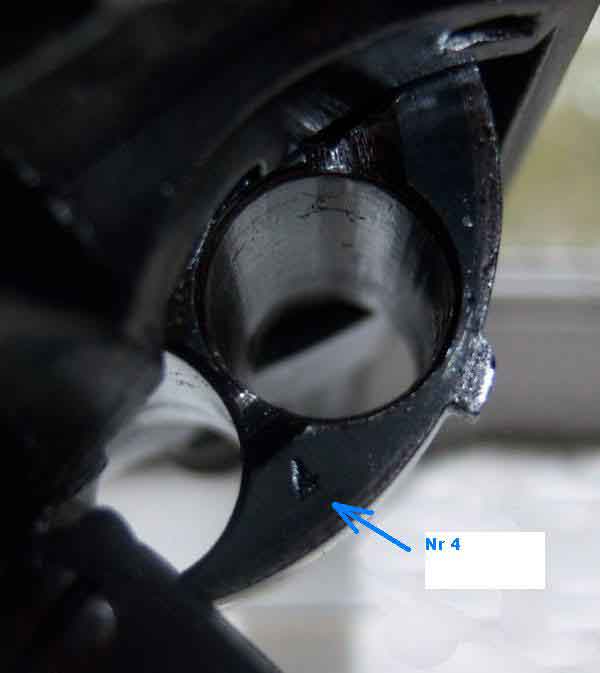 |
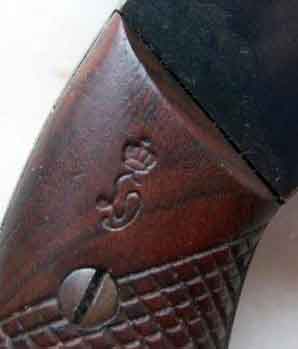 |
|
Husqvarna produced revolver for the civilian market. 11 mm Revolver m/71
|
|
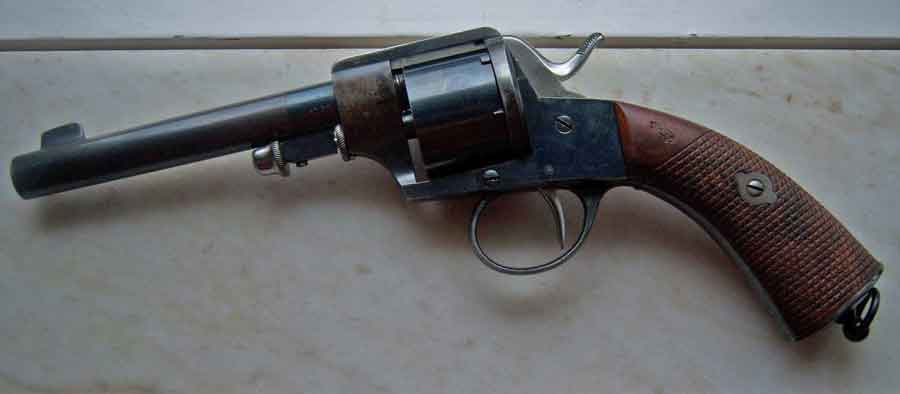 |
|
| Revolver m/71, Rev m/71 | |
|---|---|
| Calibre | 11×17 mm centerfire |
| Ammunition | 11 mm m/71 |
| V25 | 160 m/s |
| Feed | Six-shot drum |
| Design | Lefaucheux-Francottes |
| Action | Single-action revolver, side-gate opening |
| Manufacturer | A. Francotte, Liége |
| HVA | |
| Year of delivery | |
| Quantity | 6684 (HVA made 1874 about 400 ) |
| Barrel | 150 mm, 4 grooves |
| Length | 307 mm |
| Weight | 1,17 kg |
| Sights | Fixed |
| Miscellaneous | Also used by the Royal Post Office |
| Status | Obsolete |
Swedish Revolver m/1863-79
| Revolver m/63-79, Rev m/63-79 | |
|---|---|
| Calibre | 11×17 mm centerfire |
| Ammunition | 11 mm m/71 |
| Feed | Six-shot drum |
| Design | Lefaucheux |
| Action | Single-action revolver |
| Manufacturer | Lefaucheux |
| Year of delivery | 1879 |
| Quantity | 1100 |
| Barrel | 158 mm, 4 grooves |
| Length | 305 mm |
| Weight | 1,05 kg |
| Sights | Fixed post, rear sight on hammer |
| Miscellaneous | Converted Revolver m/63 |
| Also used with 113 mm barrel and stronger frame | |
| Status | Obsolete |
| Revolver m/84, Rev m/84 | |
|---|---|
| Calibre | 11,4 mm centerfire |
| Ammunition | 11,4 mm m/? |
| V0 | ≈200 m/s |
| Feed | Six-shot drum |
| Design | Chamelot-Delvigne |
| Action | Double-action revolver |
| Manufacturer | St Etienne |
| Year of delivery | 1884 |
| Quantity | |
| Barrel | 115 mm, 4 grooves |
| Length | 240 mm |
| Weight | 1,04 kg |
| Sights | Fixed |
| Miscellaneous | Same as French Navy Mle'1873 |
| Status | Obsolete |
| Calibre | 7,5×22 |
| Ammunition | 7,5 mm m/87 (black powder) |
| 7,5 mm m/98 (smokeless powder) | |
| V0 | 223 m/s (ammo m/87) |
| Feed | Six-shot drum |
| Design | Léon Nagant |
| Action | Double-action revolver, side-gate opening |
| Manufacturer | Nagant |
| HVA | |
| Year of delivery | Nagant 1887-1888 (Army) |
| Nagant 1891-1893 (Navy) | |
| HVA 189?-1905 | |
| Quantity | Nagant 2600(Army) + 480(Navy) |
| HVA ≈14000 | |
| Barrel | 114 mm, 4 grooves |
| Length | 237 mm |
| Weight | 0,8 kg |
| Sights | Fixed |
| Miscellaneous | Also used by the Royal Post Office |
| Some were modified in 1954-1957 | |
| Status | Obsolete |
Read the special article about the Swedish pistol m/1907>>>
| Pistol m/39 (Walther HP) Marked with Swedish Regiment ID. 9x19 mm Parabellum |
|
|
Pistol m/39 is normally a Walther HP bought from
Germany 1939 via the dealer Widforss in Stockholm.
|
|
Read the special article about the Swedish pistol m/1940>>>
|
|
Pistol m/40 (Husqvarna) 9x19 mm Parabellum |
|
Pistol m/40 was only produced from 1943 -1945. |
|
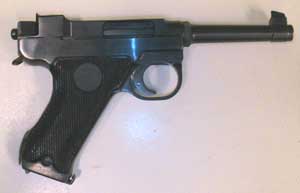 |
The
Secrete Pistol m/40.
These pistols were made for Swedish Secrete Service. 9x19 mm Parabellum |
|
Here is a very rare pistol m/40 completely without markings of the manufacturer (Husqvarna). Read more here >>> |
|
| Type | Rev m/58 | Rev m/58 B | Rev m/58 C |
| Calibre | 9,1×29 mm (.38 spl) | ||
| Ammunition | 9 mm m/58 | ||
| Feed | Six-shot drum | ||
| Design | S&W Model 12 M P | S&W Model 10 M P | S&W Model 10 M P |
| Action | Double-action revolver, swing-out cylinder | ||
| Manufacturer | Smith & Wesson | ||
| Year of delivery | |||
| Quantity | |||
| Barrel | 50 mm | 150 mm | 100 mm |
| Length | 235 mm | ||
| Weight | 0,86 kg | ||
| Sights | Fixed | ||
| Miscellaneous | Aluminum frame | Steel frame | Steel frame |
| Ring for lanyard | |||
| Status | Obsolete, sold | ||
| The unique Carl Gustafs GF Pistol 1968 | ||||||||||
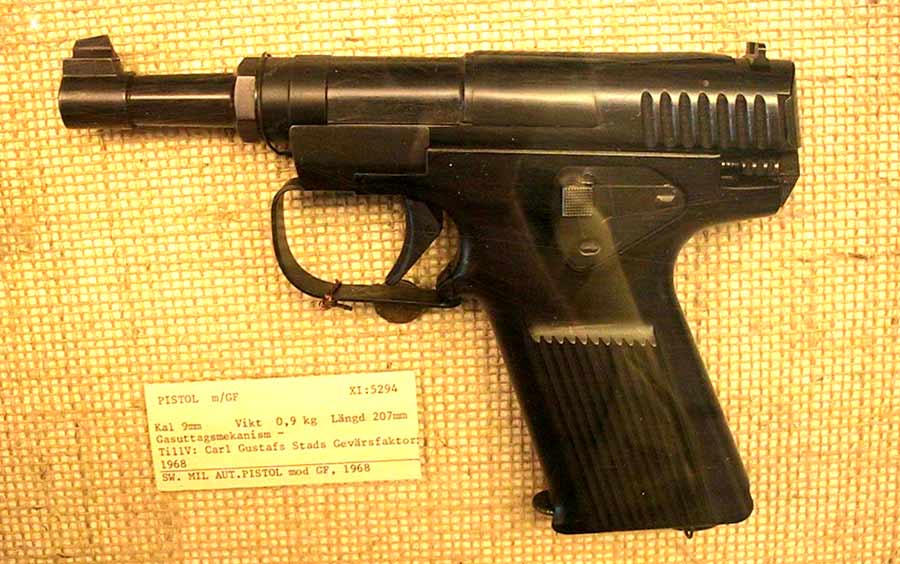 |
||||||||||
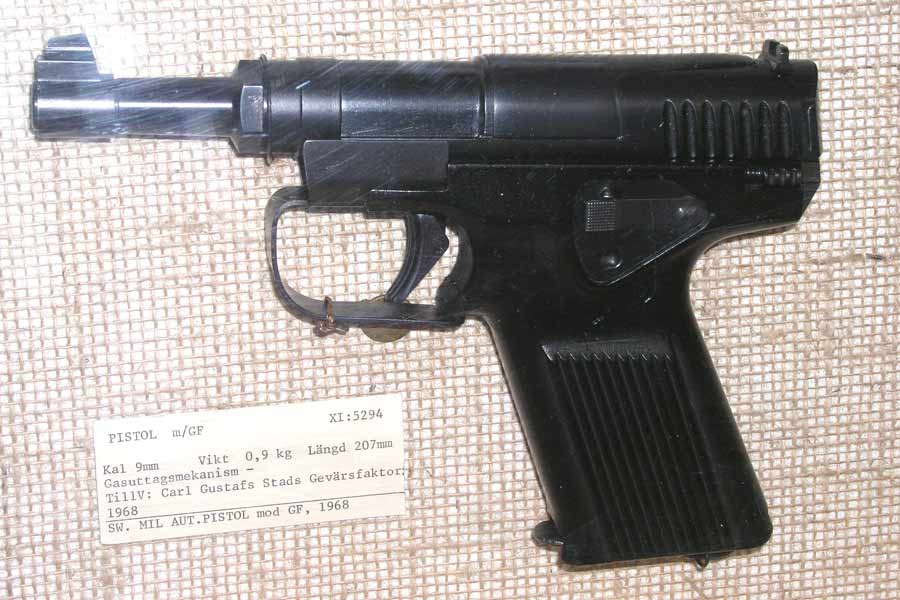 |
||||||||||
|
This Swedish pistol has a unique gas operated system. The gas system used to operate the pistol is similar to that of the German MKb42 Walther. Read about it in the article about MKb42(W).
Savage arms later copied this Swedish design! |
The current Swedish pistols:
|
The Glock
pistols in the Swedish Defence Foces.
1. Pistol88 Pistol 88. At the end of 1980-ies the Swedish Army bought Glock 17. It was designated simply Pistol 88. For some years Swedish Army
had almost no pistol at all. At this time the Army believed that there was
no need for one-hand weapons like pistols. The submachine gun or the assault
rifle could replace the pistol. All officers in the reserve should have such
two-hand weapons instead at home to be used in case of a sudden attack on
Sweden.
Pistol88B The Air force bought the smaller version Glock 19. It replaced Revolver m/58. Designated Pistol88B.
Pistol 88C and 88D The demand for more pistols
came by the increasing number of International operations outside Sweden
like in Bosnia. More pistols were bought from Glock. However Glock had
now made modifications on Glock 17.
Pistol 88C2 Later on more pistols were
bought, basically for the home-guard. These pistols have the improved frame
with an extra pin like Glock 22 (calibre 40 S&W).
Two types of holster are used Bianchi International # UM 84/92 and Safariland 6004.
|
|
|
Swedish army holster for pistol 88 BIANCHI International # UM 84/92 This is a very versetile holster. It fits on a belt or |
||
|
|
|||
|
|||
|
|
|||
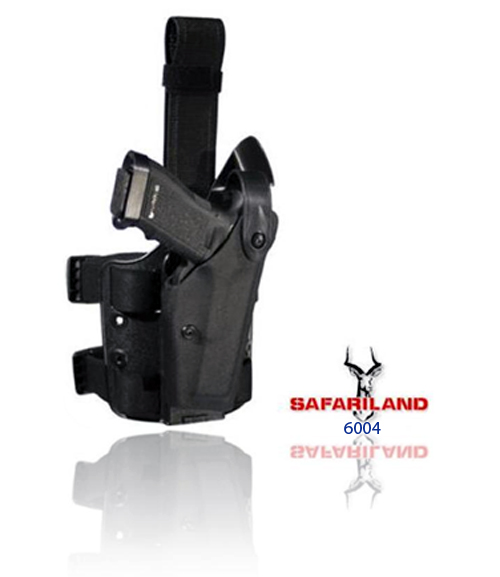 |
Safariland 6004 with Glock. | ||
This page is dedicated to our late friend
and member Kent Olsson, who
sold us so many nice and marvellous items.
He
had perhaps the largest collections of small arms in Sweden.
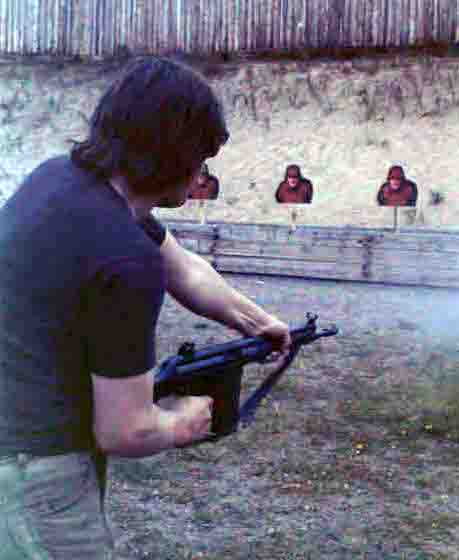
Kent is seen here 1971 firing Ak4 (G3) full auto in a Championship in Kristinehamn.
References:
Vapenmuseet in Eskilstuna
Kent Olsson
Arméns handeldvapen förr och nu av Josef Alm
Thomas Broborn
Arne Thell
Husqvarna vapenfabrik
|
|
Back |